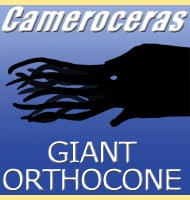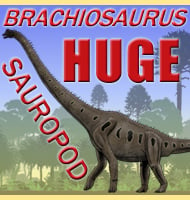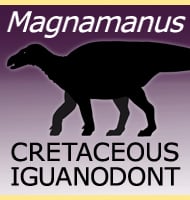In Depth
Plesiadapis is popularly depicted as the ancestor of the primates, something that is reflected in its name that means ‘near Adapis’, one of the earliest known primates. This idea is not without its critics however, with most palaeontologists preferring to treat it as a representative of an ancestral form rather than ‘the’ ancestor of the primates. Some palaeontologists go even further than this and treat Plesiadapis as part of a sister group separate to but related to the ancestors of primates. The type species name P. tricuspidens is a reference to the incisors of the holotype specimen which have three cusps (points) to them.
The dental formula for Plesiadapis is 2.1.3.3 (two incisors, 1 canine, three premolars, three molars) across both upper and lower jaws, yielding a total of 36 teeth. Unfortunately it is currently impossible to be certain about just what it ate. Plesiadapis would have come from insectivorous/carnivorous ancestors and the teeth would still be suited to a carnivorous diet. However there also seems to be a shift towards herbivory which suggests that Plesiadapis was eating parts of plants like fruits and nuts. It is also just as possible that Plesiadapis was an omnivorous creature that foraged for whatever was edible.
There has also been a lot of discussion and opinion regarding the lifestyle of Plesiadapis with some proposing that Plesiadapis was a cursorial creature that lived upon the ground. However more popular thinking depicts Plesiadapis as an arboreal creature that would climb up trees and move from branch to branch through the tree canopy. Although perhaps not as graceful as later more specialised arboreal mammals, Plesiadapis does possess skeletal features such as limbs that face towards one another and long clawed fingers that would have helped it more to grip hold of branches rather than run across the ground.
When first described in 1877, Paul Gervais based his description upon a partial left mandible (lower jaw). Since this discovery however many other remains of Plesiadapis have been discovered with some of the best and most complete coming from France. Skin and fur are also known to be preserved as carbonaceous film, a preservation process where intense pressures and heat from the weight of overlying sediments press down upon a fossil creating a ‘print’ of the soft tissues in the form a thin layer of carbon upon the rock. Because carbonaceous film is only known from Europe and North America it is thought to have travelled across Greenland when an ancient land bridge still connected these two parts of the world.
Further Reading
– A revision of the Lower Eocene Wasatch and Wind River faunas. Bulletin of the American Museum of Natural History 34. – W. D. Matthew – 1915. – New Vertebrate Fossils from the Lower Eocene of the Bighorn Basin, Wyoming. – Proceedings of the American Philosophical Society 69(1):117-131. – G. L. Jepsen – 1930. – A new fauna from the Fort Union of Montana. – American Museum Novitates 87. – G. G. Simpson – 1936. – New North American Plesiadapidae (Mammalia, Primates) and a biostratigraphic zonation of the middle and upper Paleocene. – Contributions from the Museum of Paleontology, University of Michigan 24(13):135-148. – P. D. Gingerich – 1975. – Cranial Anatomy and Evolution of Early Tertiary Plesiadapidae (Mammalia, Primates). – University of Michigan Papers on Paleontology 15:1-141. – P. D. Gingerich – 1976. – The Clarkforkian Land-Mammal Age and Mammalian Faunal Composition Across the Paleocene-Eocene Boundary. – University of Michigan Papers on Paleontology 26:1-197. – K. D. Rose – 1981. – Plesiadapid mammals from the latest Paleocene of France offer new insights on the evolution of Plesiadapis during the Paleocene-Eocene transition. Journal of Vertebrate Paleontology 38:e1460602:1-22. – E. De Bast, C. Gagnaison & T. Smith – 2018. – Evolution of plesiadapid mammals (Eutheria, Euarchonta, Plesiadapiformes) in Europe across the Paleocene/Eocene boundary: implications for phylogeny, biochronology and scenarios of dispersal. – Palaeobiodiversity and Palaeoenvironments 1-59. – M. Jehle, M. Godinot, D. Delsate, A. Ph�lizon & J.-L. Pellouin – 2018.









